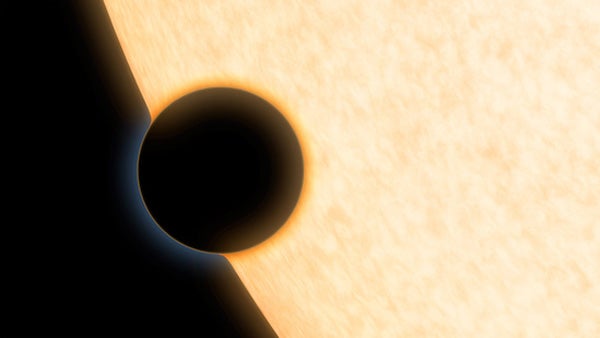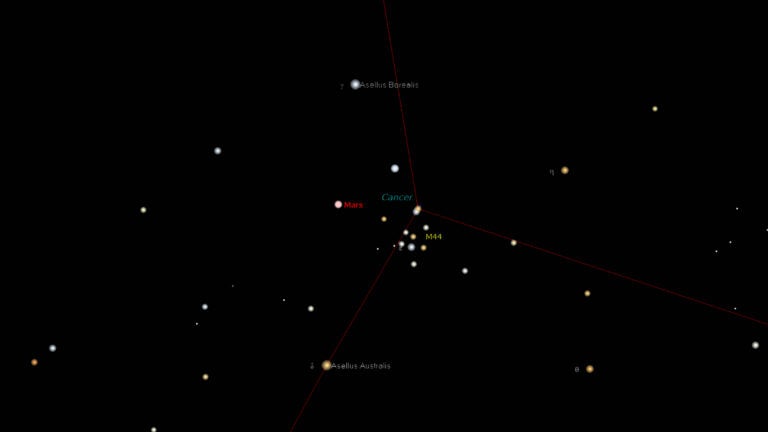The team was led by Drake Deming from the University of Maryland, an expert in the study of exoplanets.
The finding of water vapor and hydrogen in the atmosphere of exoplanet HAT P-11b is not only an astonishing piece of long-distance detective work, based on analyses of observations by three different NASA telescopes, but it also suggests that astronomers’ ideas about how the planets formed appear to hold true for other planetary systems as they do in our own.
How do scientists detect water in distant exoplanets? They use a quirk of light that happens when a planet transits, or passes in front of, its host star. Material in the planet’s atmosphere absorbs some of the star’s light, and that makes the planet appear bigger. By plotting changes in the exoplanet’s size, and relating them to the wavelength of electromagnetic radiation that the telescope observes, astronomers get a graph that shows how much of the star’s radiation the planet’s atmosphere is absorbing. The shape of that graph, called a transmission spectrum, can reveal what chemicals are present in the atmosphere.
The bigger the planet, the more obvious are the changes in the planet’s size during its transit across its host star. Astronomers have used this technique to describe the atmospheres of several giant planets, the size of our solar system’s Jupiter. In this study, the team wanted to analyze the atmosphere of a significantly smaller planet.
The team chose HAT P-11b, which was discovered by the Hungarian-made Automated Telescope (HAT) network. It’s about four times the radius of Earth and about 26 times Earth’s mass. Compared to planets in our solar system, HAT P-11b is closest in size to Neptune. But it is much closer to its host star and therefore much hotter, 1,120° Fahrenheit (604° Celsius). It probably has a rocky core, wrapped in a thick gaseous envelope of about 90 percent hydrogen. Its atmosphere is cloudless at high altitude, but as the team found, it contains the signature of water vapor.
Jonathan Fraine from the University of Maryland observed HAT P-11b using two NASA telescopes — the Hubble Space Telescope, which measures visible and near-infrared light, and the Spitzer Space Telescope, which records only infrared light — between July 2011 and December 2012. The team compared those data to observations by NASA’s Kepler mission, which was launched to look for exoplanets and continuously records images of the portion of the sky where HAT-P-11b is located.
Why do astronomers look for water on exoplanets? First, because water is a precondition for life even though the presence of water alone is not enough for life to arise. “The water molecule is widespread in the universe,” said Deming. “Wherever you have hydrogen and oxygen, it naturally forms. Even some sunspots are cool enough to contain water vapor, although obviously it’s far too hot for life on the Sun.”
Astronomers also want to test the hypothesis that other planets formed the same way ours did. In the primordial solar system, particles of dust and ice carried native electrical charges that caused them to stick together, like household “dust bunnies” do, in a process called core accretion. Early in this process, the giant planets that formed far from the Sun had enough gravitational pull to attract large amounts of hydrogen gas.
In our solar system’s giant planets, water freezes and precipitates out of the atmospheres, so it occurs only at levels that are difficult to observe. The closer, smaller planets, Mars, Venus, and Earth, had water early in their evolution, though only Earth retains liquid water at the surface. The smaller the planet, astronomers believe, the more likely it is that heavier molecules like water vapor will be abundant along with hydrogen.
“Our ideas about the formation of planets have been developed to match our solar system, and we don’t know whether other planetary systems behave the same way,” said Deming. “We want to test the fundamental question of whether small planets are rich in heavy elements, like the oxygen in water vapor.”
The finding of water vapor and hydrogen on HAT P-11b “is a key piece of the puzzle,” Deming said, consistent with astronomers’ main ideas on the formation of planets.










